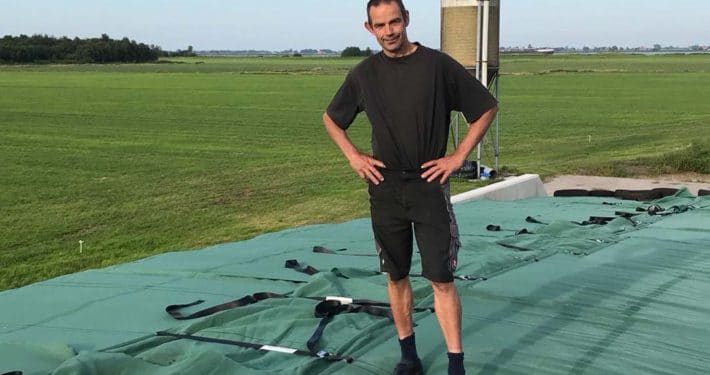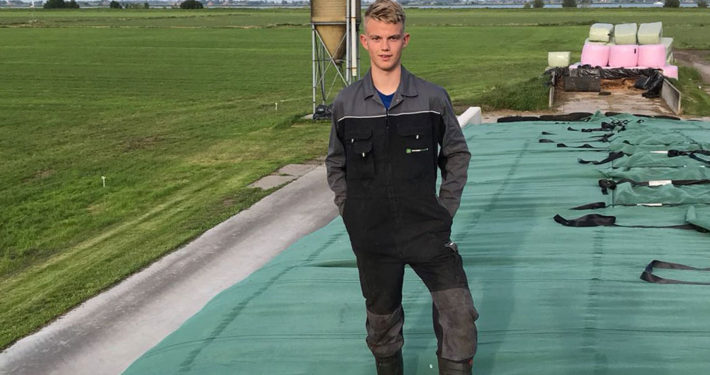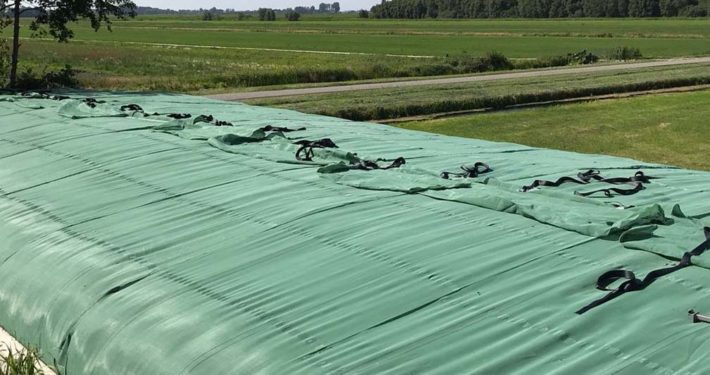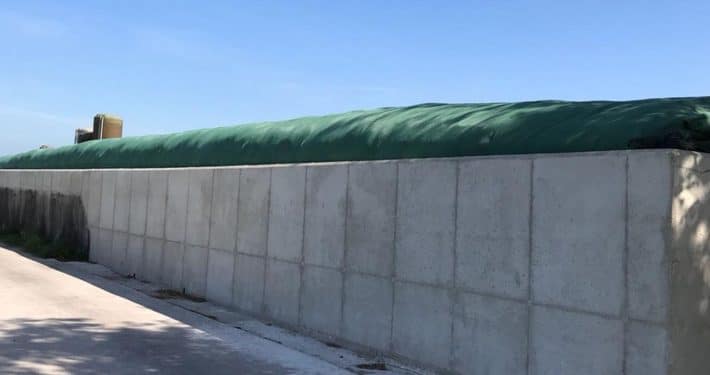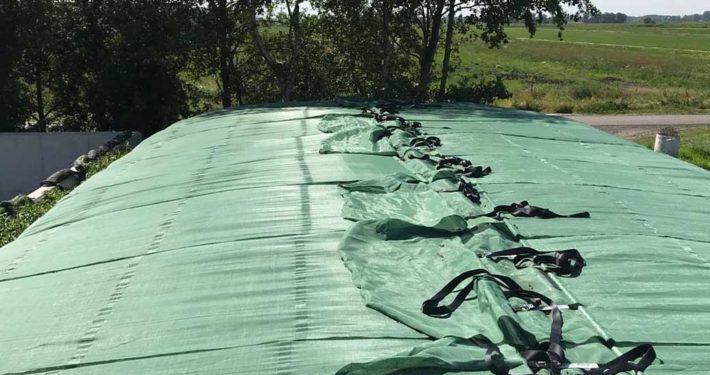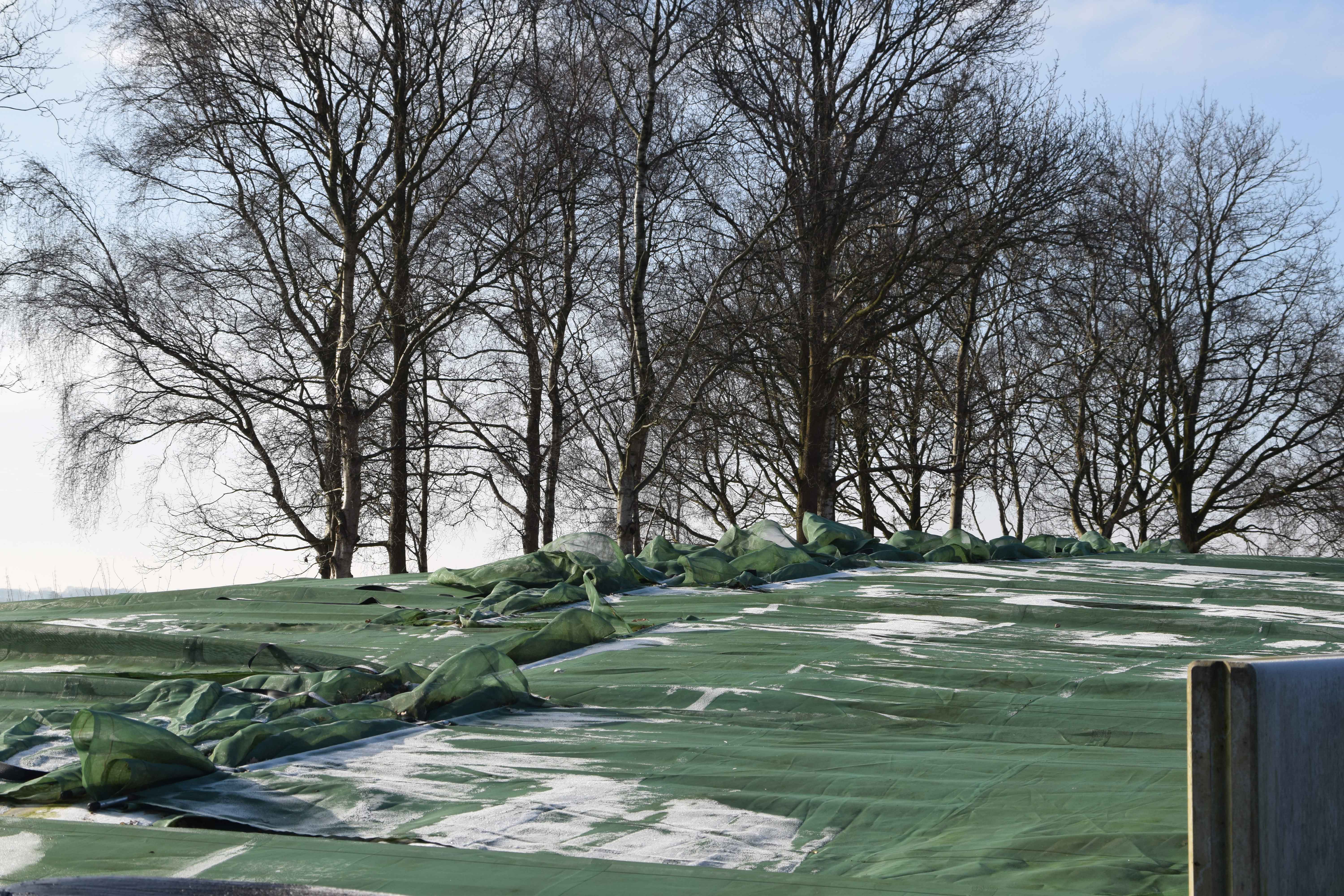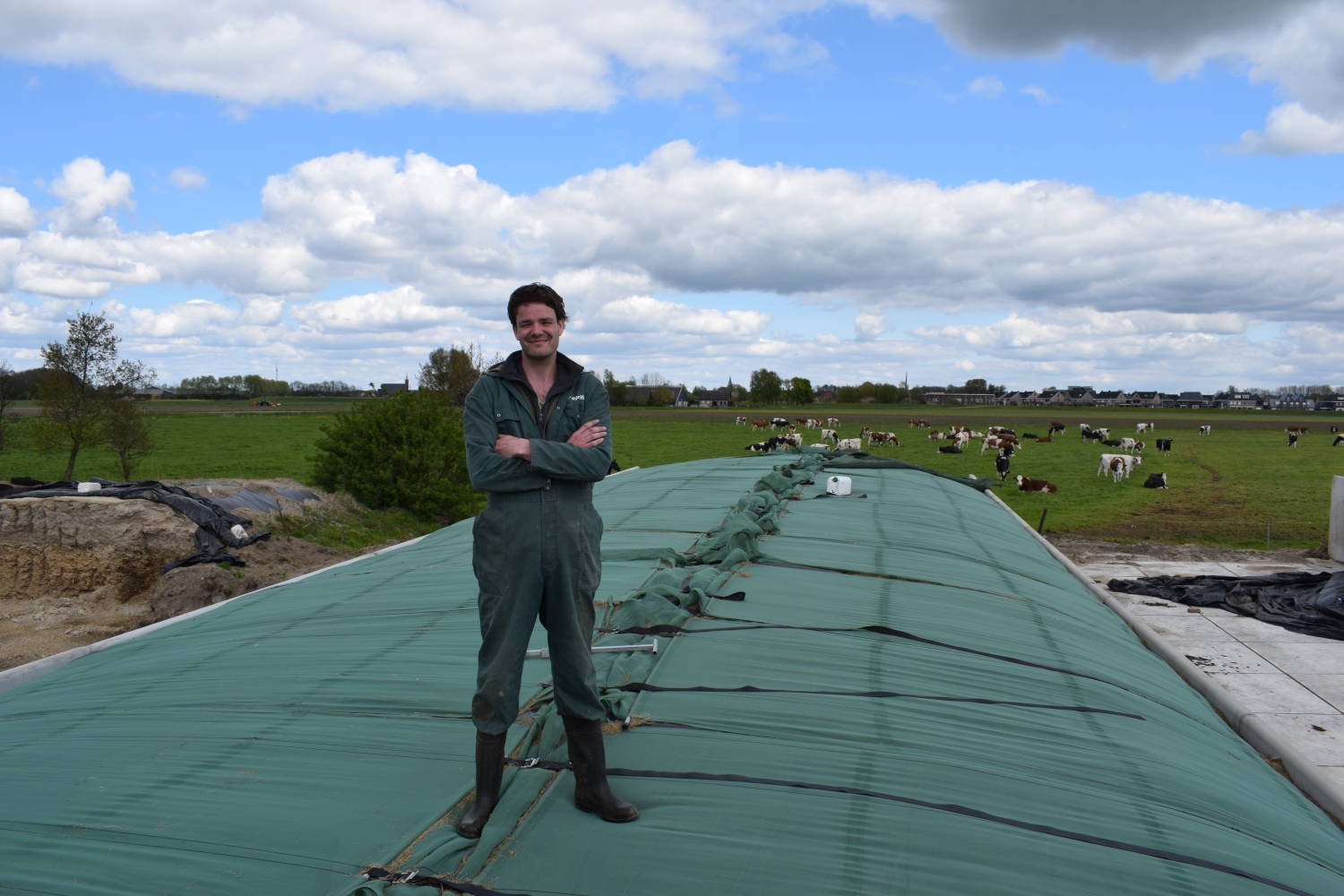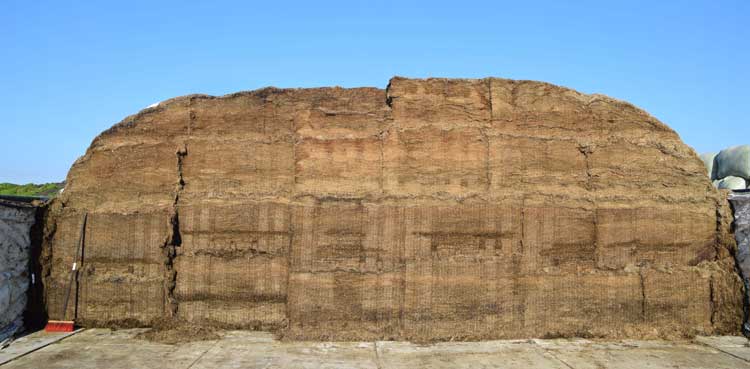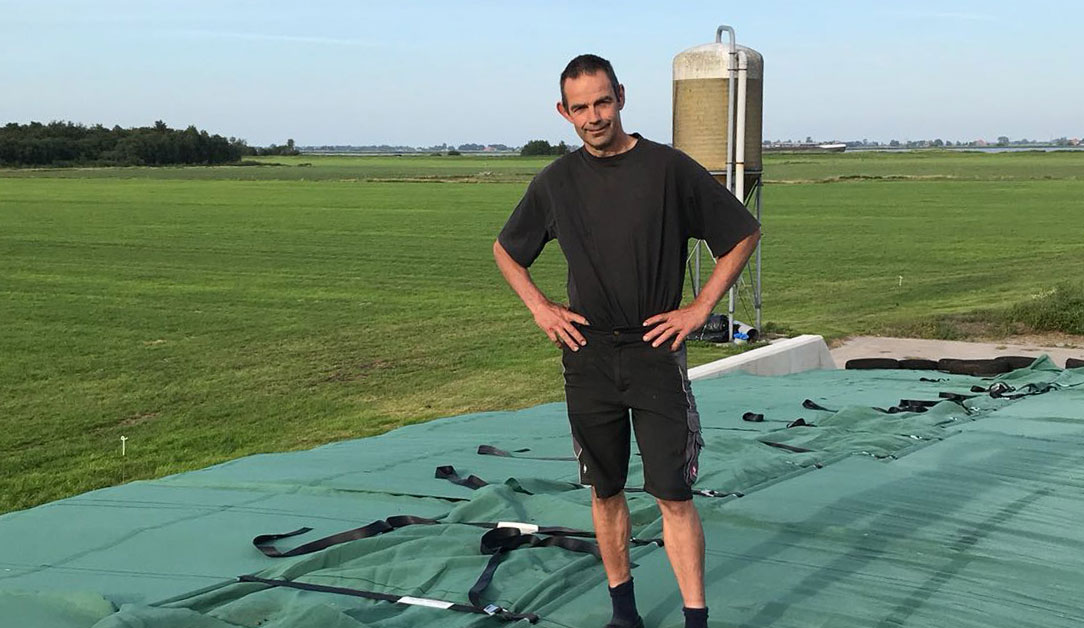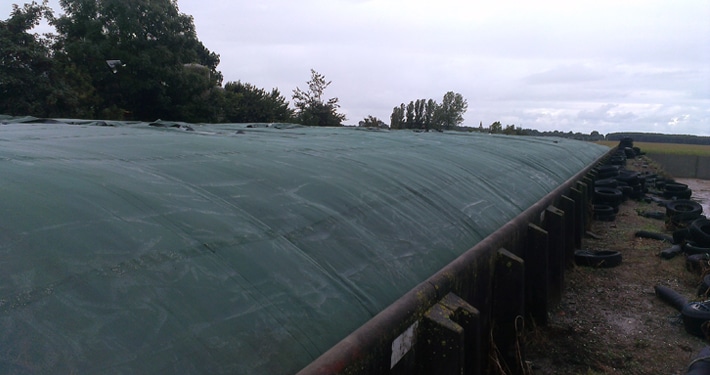More references:
Father and son Schep from Lemmer (FR) have been using the Silage Safe covering system since spring 2018. They have silage layers and wanted to make it easier to work with. Opening and resealing the layered silage pits took a lot of time and labor. “Now it’s very fast and easy” as described of son Schep. “The cloths are already in place. So all you have to do is lay it over the wall and when you close it, pull it back over the pit”.
It takes two to cover
The biggest advantage of Silage Safe for Schep is the reduced labor. “We no longer have to work ‘beyond our strength’; we have fairly high silo walls where we always put sand hoses on the edges. That was tedious work.”
The laborious aspect has also been reduced, says Schep: “Previously we had to cover with several people. That is no longer necessary, because you work with strips that are much lighter than one large cloth. We are also in a place where there is a lot of wind and when covering the pit it’s ideal that the wind does not get under such a large cloth”.
No more tires
Schep’s other pits are covered with plastic, sand hoses and tires. “The tires on this pit are a thing of the past with Silage Safe,” father Schep adds. The covering system is tight, so the tires are no longer necessary to keep the cloths on the pit. That saves them a lot of work and time. “In addition, our yard looks much neater, without tires. The green cloths fits much better in the landscape compared to tires”.
Ensilaging with a curve
The quality of the roughage also seems to be good. “We used to have mold on the edges, but that doesn’t seem to be the case now. We can now cover the edges perfectly airtight, because the system is tight especially in that part of the silage”.
And that is also due to the beautiful curved silage at Schep. Because the silage is curved the tension of the cloths is optimal everywhere. There is no space underneath and oxygen has to chance of getting in.

